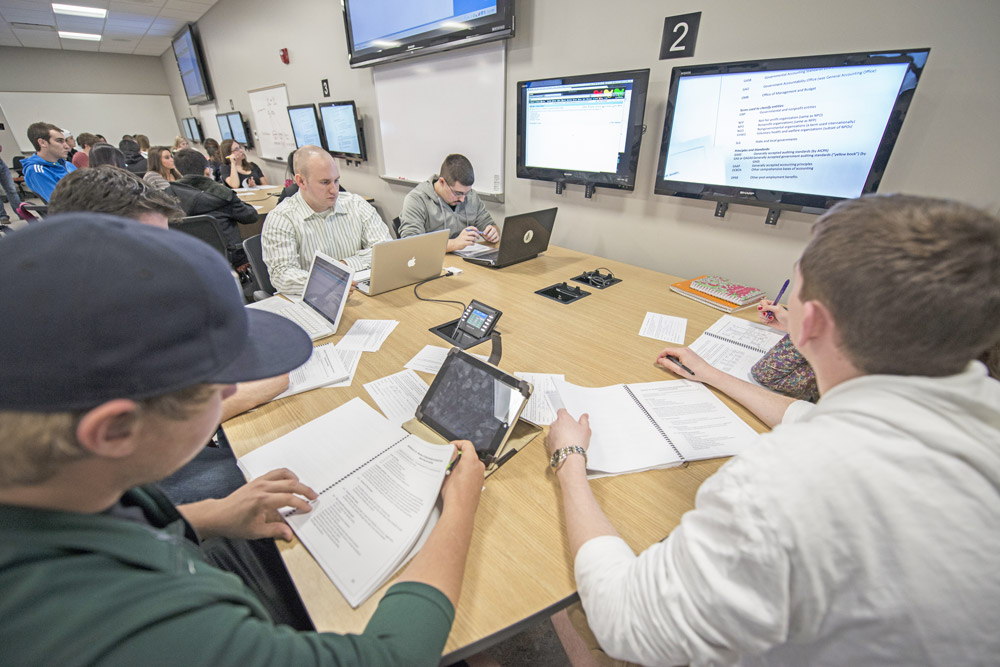Eli Review is a peer-based review platform that allows students and instructors to give feedback based on a set of criteria to pieces of writing.
Students often learn best in a social context when thoughtful feedback is provided and negotiated. Eli is best used as a space for reviewing drafts, creating revision criteria, and communicating best practices in revisions.
MSU signed a licensing agreement to use Eli Review more broadly starting in the fall 2013 semester. (Read the Student Perceptions of Eli Review at MSU: 2012-2014 report that followed initial pilots of the tool on campus.)
Instructors providing multiple formative assignments or relying extensively on peer review may find Eli a helpful tool for improving student writing. Eli can help facilitate collaboration, skill training, conversations between students and instructors, and revision strategies.
How Eli Review Works
Faculty members can follow the D2L instructions for using Eli Review within D2L. Staff need to fill out a request form. If you have questions, call (517) 432-6200 or toll free (844) 678-6200.
Instructors should make Eli usage known through MSU’s procedures for disclosing assigned texts, required tools, and materials in advance of course enrollment.
Many writing instructors have found using Eli for small assignments (i.e., a thesis statement, annotated bibliography) works better than for entire papers. Smaller assignments make it easier to focus on one specific set of criteria and goals. Students stay more engaged with a small task and can move forward in an assignment when the core elements are properly set up.
Since Eli Review is an online platform, students can use it any time, allowing instructors flexibility in assigning reviews. Eli has a feature to accept or decline late work, so students are responsible for the online homework just as in-class homework.
Sample 1 for Response Criteria
This is a sample of a writing assignment where the review is based on a counter argument paragraph in an essay. The paragraph assigned is between 6-8 sentences long. The assignment is slotted for 20 minutes of class time.
Contextual comments: Students give in-line comments about the coherency of the paragraphs, the word choices, and whether or not key topics were fully explained.
Trait identification: Students identify whether the following traits were met in the paragraph.
- Set clear and concise key topic statements
- Organization of proof materials and counter materials
- Proper use of in-text citations – APA format
- Clearly show how the refute interacts with the thesis statement
- Length of 6-8 sentences
- Proper word choices and definitions for new terms
Rating scale: Students use a 5-star rating scale for quick peer feedback to show what was done well. (Star rating scales range between 4 and 20 stars.)
Ratings are based on:
- Transition statements
- Overall coherency
- APA format
- Clear mechanics (in this case, meaning no editing errors)
Final Comments: This area is for a final comprehensive comment about the entire work that was reviewed. A lot of times, it is suggested that students not only give feedback, but also post questions to indicate where items need further explanation or clarification.
Sample 2 for Response Criteria
This is a sample based on a weekly report for an engineering student. The reports then need to be compiled for an annual review.
Contextual comments: This area is used for in-line feedback anchored to specific sentences in the report.
Trait identification: Students identify whether the following traits were met in the report.
- Concise summary of weekly activities
- Annotated list of sources reviewed
- Proper use of in-text citations – APA format
- Clarity of weekly goals (in this case, if goals have been met)
Rating scale: Students use a likert scale for quick peer feedback to show how effective the language and organization of the report was. (The range is from unsatisfactory to satisfactory.)
Ratings are based on:
- Appropriate language used (in this case, key terms for the engineering discipline)
- Overall coherence and usability of the report
- APA format
- Clear mechanics (in this case, meaning no editing errors)


